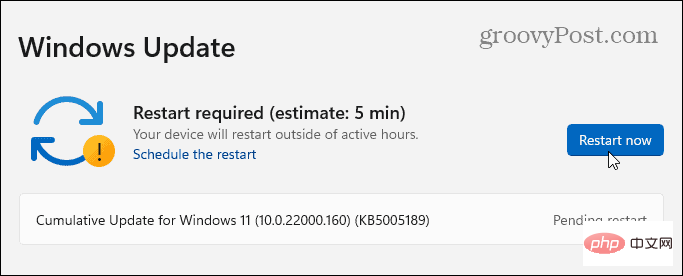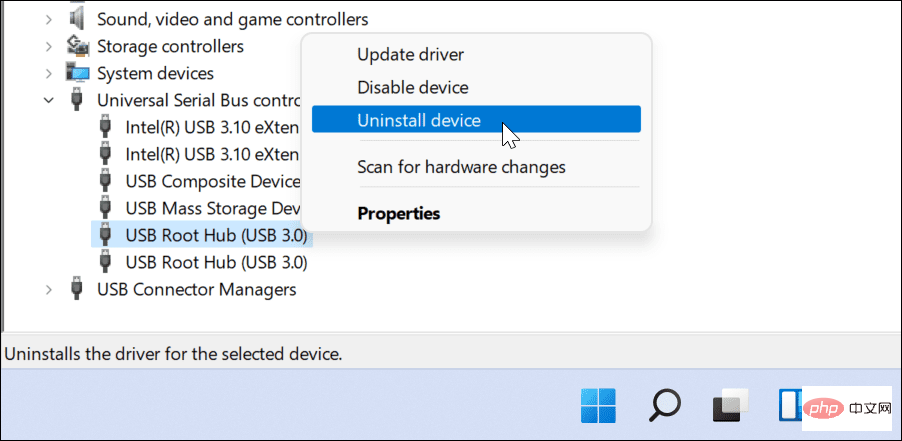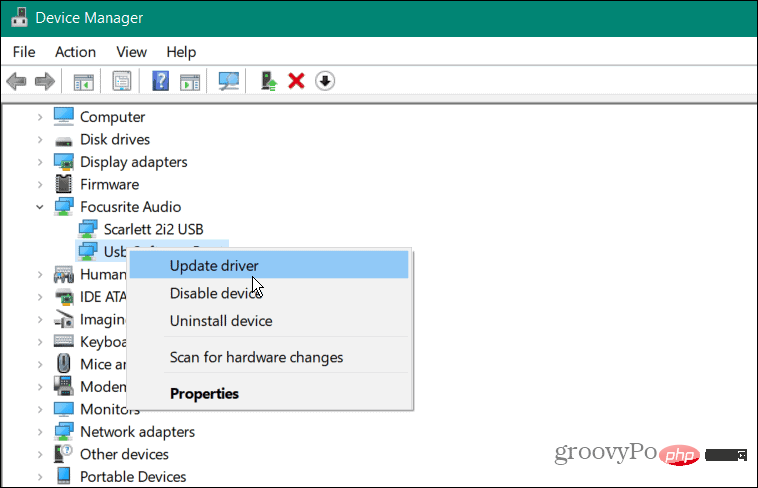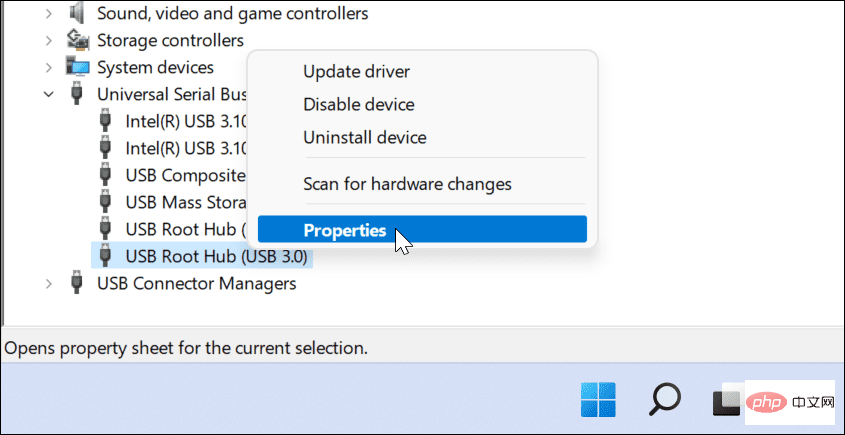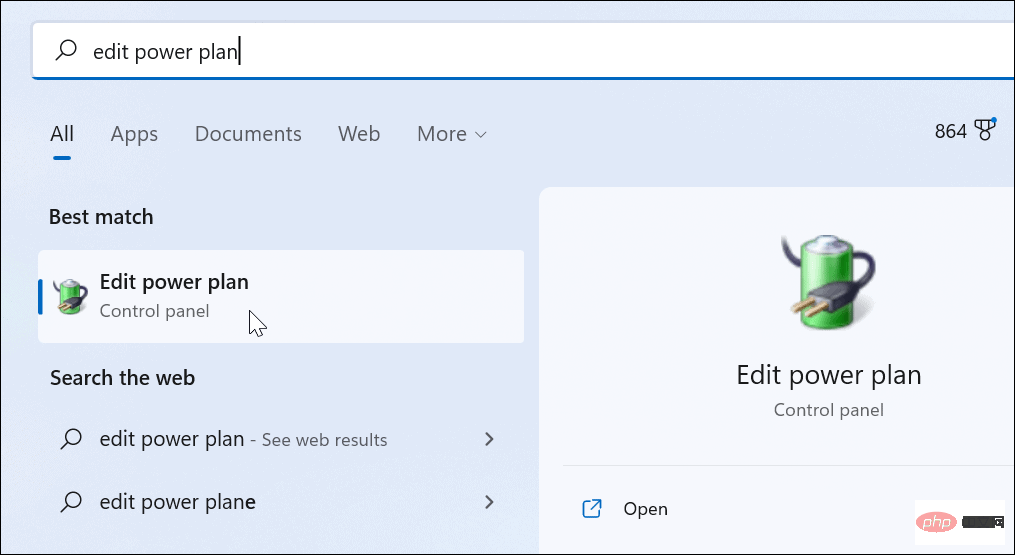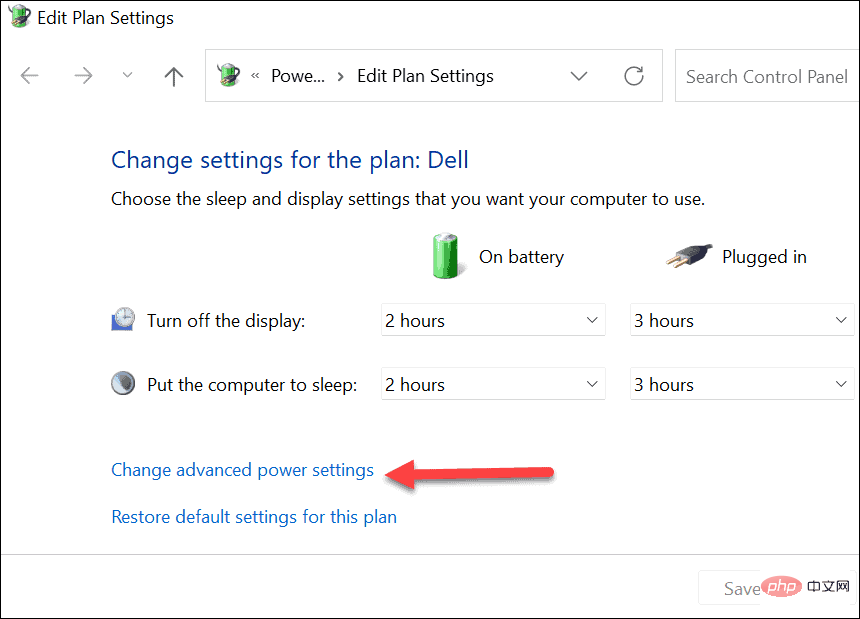11 Ways to Fix USB Not Working on Windows 11
1. Check Your Device (and USB Ports)
Before attempting any drastic repairs to the USB ports on your PC, you should check for possible damage.
This includes removing the USB device, checking the cable and USB port, and then reconnecting it. For example, if a cable is damaged, you may need to replace it. If there is dust in the USB port, use some canned air to clear it out.
After checking for damage and cleaning the USB port, replug the device and see if it fixes the USB not working error on Windows 11.
2. Try a different USB port
If you are sure that your device is working properly, there may be a problem with the USB port you are using.
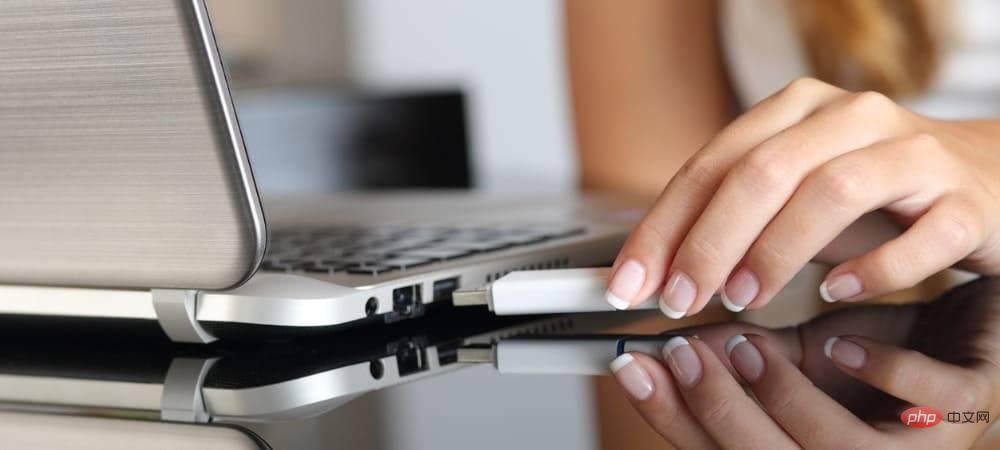
The fix is easy - just remove the USB drive from the port you are currently using and place it in another port. If the device is recognized by Windows 11 and working properly, you can troubleshoot the previous port.
However, until then, you can continue to use the new port to complete your work.
3. Replace the USB device
If the USB port seems to be working fine, the fault may be related to the device you are using. If Windows doesn't recognize it (at least temporarily), you may need to switch the device to something else.
For example, a USB hard drive will only be recognized if the drive itself is not faulty. Before considering a replacement, be sure to try the device on another PC (if possible) to see if it works properly.
Unfortunately, it's difficult to determine why a USB device may have stopped working. You may want to consult the device's user manual to investigate, or if possible, check out possible support options provided by the manufacturer.
4. Restart Windows 11
Think your USB port or device is faulty? Don't panic - restart your computer first. This is a tried and tested method for fixing any number of troubleshooting issues on your PC, including USB device failure.
You may find that restarting your PC forces Windows to install missing drivers. If your USB is not recognized on Windows 11, this may fix the problem.
Quick Restart Windows 11:
- Keep the USB device plugged in and restart Windows 11 by right-clicking on the Start menu.
- In the pop-up window, selectShut down or log off > Restart.
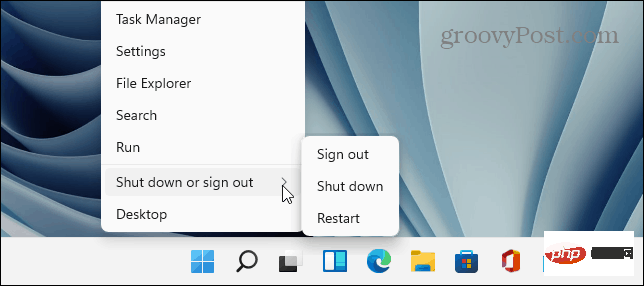
#If there is a software issue, Windows should recognize your USB device after restarting and install any missing drivers if necessary.
5. Check for Windows Updates
Keeping your Windows 11 PC up to date is crucial, as new Windows updates may include fixes for faulty USB ports or faulty devices, as well as general availability Improve.
To check for Windows Updates on Windows 11:
- Open the Start menu and press Settings (or press the Windows key I).

- In Settings, navigate to Windows Update and click Check for updates button.
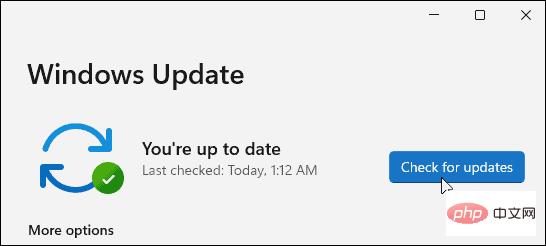
- Windows 11 will check for any available updates and download them.
- To install any available updates, click the Restart Now button or set an active time to restart Windows when you are not using your computer.

- You should also check for optional updates (which usually include non-critical device drivers). To do this, navigate to the Advanced options section in Windows Update, select Optional Updates, and install any available updates listed.
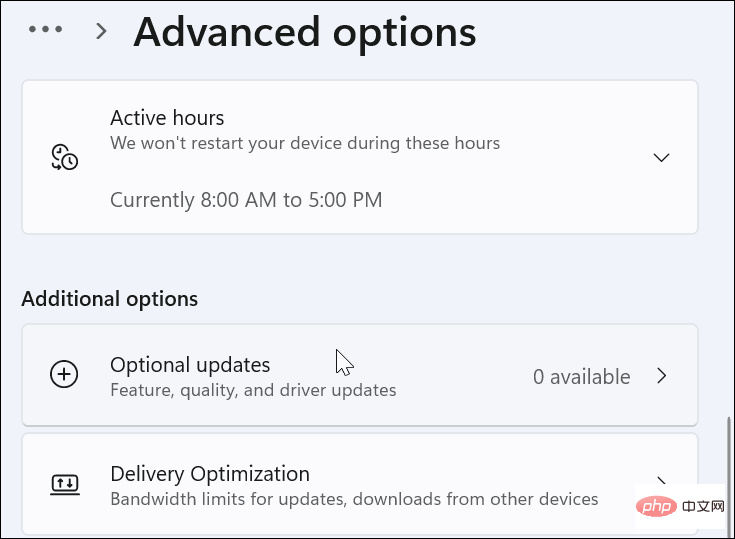
6. Reinstall the USB driver
Another thing you can do is make sure your USB driver is up to date. You can quickly update or reinstall USB drivers by following these steps:
- Press the Start button or the Windows key to open the Start menu.
- Enter Device Manager and select the top result.

- Scroll the Device Manager tree menu and expand the Universal Serial Bus Controllers section.
- Right-click on each entry and select Uninstall Device.

- Restart your PC and Windows should automatically reinstall the latest drivers for the device during the restart.
7. Use OEM tools to check for software updates
Windows Update is not a perfect resource and it will not contain every possible update for your hardware. However, you can manually check for software updates using an OEM update application created by the device manufacturer.
For example, if you are missing important chipset drivers, your USB ports may not work properly. You can usually resolve this issue by installing the necessary drivers directly from the manufacturer or using an OEM update application.
Check for OEM software updates:
- Launch the Start menu and search for the first letters of your computer manufacturer. For example, search for "D" for Dell or "L" for Lenovo.
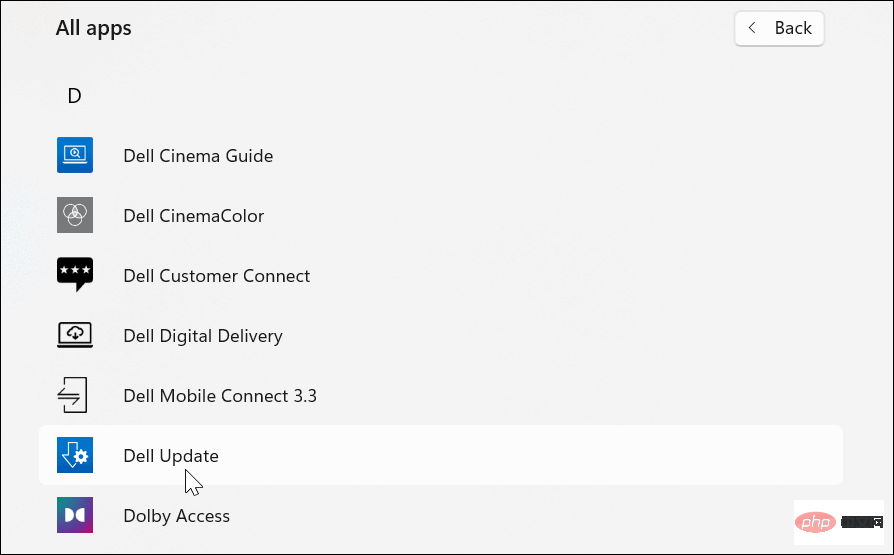
- Find and launch the manufacturer's update tool and install any hardware updates it finds.

8. Manually check for software and driver updates
If you do not have OEM tools installed, you can search for your manufacturer online and manually Download updates. If you search for your device's model number, you should be able to find drivers and software updates that you can download and install.
Certain types of device manufacturers will provide updated software and drivers more regularly. For example, if you have a premium gaming keyboard, streaming microphone, or audio interface device that connects via USB, you may see a faster update schedule than other types of devices.
To install driver updates manually:
- Download the latest USB device or software driver from the manufacturer's website.
- Press the Windows key R on your keyboard to open the Run dialog box.
- In Run, type devmgmt.msc and click OK.

- When Device Manager opens, find your USB device in the list, right-click it and select Update Driver.

- Select Browse my computer for driver, navigate to the driver you downloaded, and follow the on-screen instructions to complete the installation.
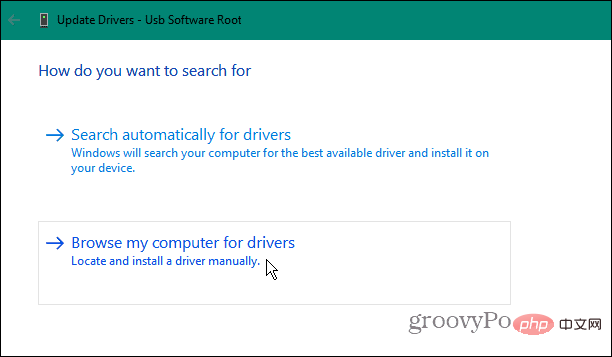
#If you have downloaded the software update, run the installer file and follow the on-screen instructions to complete the update. You may need to restart your PC to complete any changes.
9. Change power management settings
USB devices require a lot of power, but if you run on battery power, this power is not always available. For example, a USB drive may not show enough charge due to the power management settings of a laptop that runs on battery.
You can resolve this issue by changing the power management settings. To do this:
- Press the Windows key R to open the Run dialog box.
- In Run, type devmgmt.msc and click OK.
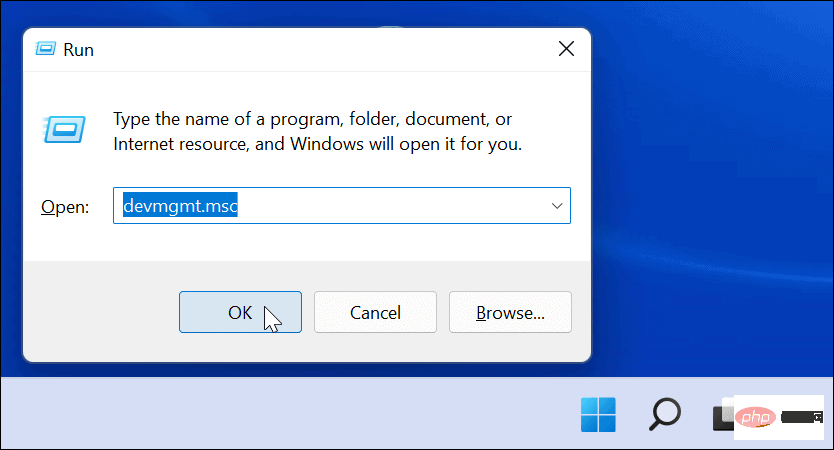
- Scroll down and expand the Universal Serial Bus Controllers section in Device Manager . Right click on
- USB Root Hub and select Properties.
 In the
In the - USB Root Hub Properties window, select the Power Management tab. Uncheck the
- Allow the computer to turn off this device to save power option and click OK.

10. Disable USB Selective Power Suspend Option
Another potential issue with USB devices is the USB Selective Power Suspend feature. This helps save your laptop's battery by pausing devices that aren't always in use.
Unfortunately, this can sometimes interfere with the USB device you are using. If Windows thinks the device is not being used, it cuts power to it and stops it from working.
To disable the USB Selective Suspend option on Windows 11:
- Press the Start or Windows key to open the Start menu.
- Type Edit Power Plan and select the top result.

- Next, click the Change Advanced Power Settings option.

- In Power Options, expand USB Settings and USB Selective Suspend Settings Option changed to Disabled.
- Click OK Save.
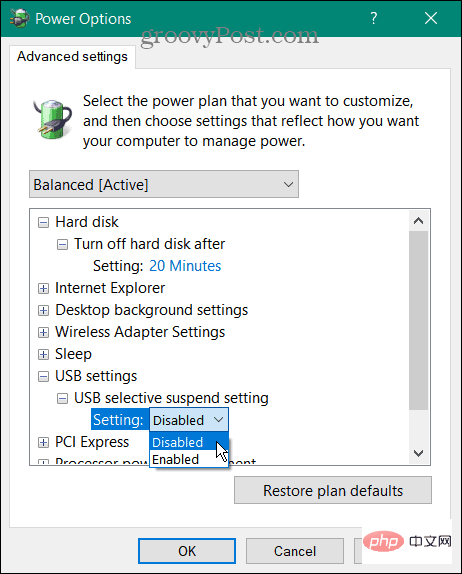
11. Run SFC and DISM scans
If the above options don’t work, you may want to check if your Windows 11 installation is corrupted. The SFC and DISM tools will check your local drive for corrupted system files and replace them.
To run the SFC and DISM tools on a PC:
- Right-click the Start button and select Windows Terminal (Admin) from the menu .
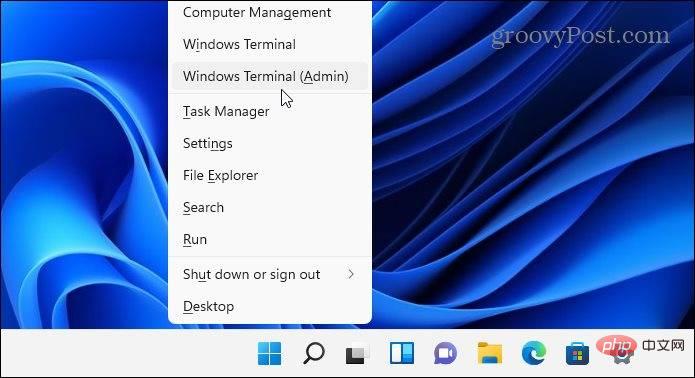
- Enter the following command in the terminal window and press Enter:
DISM /Online /Cleanup-Image /RestoreHealth

- #After the DISM scan is complete, run the SFC scan by entering the following command:
sfc /scannow

Please note that these The scan may take a while to run. Once the scan is complete, restart your PC and see if the USB device works again. If these tools don't fix your PC, you may need to reset Windows 11 to factory settings.
The above is the detailed content of 11 Ways to Fix USB Not Working on Windows 11. For more information, please follow other related articles on the PHP Chinese website!

Hot AI Tools

Undresser.AI Undress
AI-powered app for creating realistic nude photos

AI Clothes Remover
Online AI tool for removing clothes from photos.

Undress AI Tool
Undress images for free

Clothoff.io
AI clothes remover

Video Face Swap
Swap faces in any video effortlessly with our completely free AI face swap tool!

Hot Article

Hot Tools

Notepad++7.3.1
Easy-to-use and free code editor

SublimeText3 Chinese version
Chinese version, very easy to use

Zend Studio 13.0.1
Powerful PHP integrated development environment

Dreamweaver CS6
Visual web development tools

SublimeText3 Mac version
God-level code editing software (SublimeText3)

Hot Topics
 1386
1386
 52
52
 How to convert XML to PDF on your phone?
Apr 02, 2025 pm 10:18 PM
How to convert XML to PDF on your phone?
Apr 02, 2025 pm 10:18 PM
It is not easy to convert XML to PDF directly on your phone, but it can be achieved with the help of cloud services. It is recommended to use a lightweight mobile app to upload XML files and receive generated PDFs, and convert them with cloud APIs. Cloud APIs use serverless computing services, and choosing the right platform is crucial. Complexity, error handling, security, and optimization strategies need to be considered when handling XML parsing and PDF generation. The entire process requires the front-end app and the back-end API to work together, and it requires some understanding of a variety of technologies.
 What is the reason why PS keeps showing loading?
Apr 06, 2025 pm 06:39 PM
What is the reason why PS keeps showing loading?
Apr 06, 2025 pm 06:39 PM
PS "Loading" problems are caused by resource access or processing problems: hard disk reading speed is slow or bad: Use CrystalDiskInfo to check the hard disk health and replace the problematic hard disk. Insufficient memory: Upgrade memory to meet PS's needs for high-resolution images and complex layer processing. Graphics card drivers are outdated or corrupted: Update the drivers to optimize communication between the PS and the graphics card. File paths are too long or file names have special characters: use short paths and avoid special characters. PS's own problem: Reinstall or repair the PS installer.
 xml online formatting
Apr 02, 2025 pm 10:06 PM
xml online formatting
Apr 02, 2025 pm 10:06 PM
XML Online Format Tools automatically organizes messy XML code into easy-to-read and maintain formats. By parsing the syntax tree of XML and applying formatting rules, these tools optimize the structure of the code, enhancing its maintainability and teamwork efficiency.
 How to solve the problem of loading when PS is always showing that it is loading?
Apr 06, 2025 pm 06:30 PM
How to solve the problem of loading when PS is always showing that it is loading?
Apr 06, 2025 pm 06:30 PM
PS card is "Loading"? Solutions include: checking the computer configuration (memory, hard disk, processor), cleaning hard disk fragmentation, updating the graphics card driver, adjusting PS settings, reinstalling PS, and developing good programming habits.
 How to speed up the loading speed of PS?
Apr 06, 2025 pm 06:27 PM
How to speed up the loading speed of PS?
Apr 06, 2025 pm 06:27 PM
Solving the problem of slow Photoshop startup requires a multi-pronged approach, including: upgrading hardware (memory, solid-state drive, CPU); uninstalling outdated or incompatible plug-ins; cleaning up system garbage and excessive background programs regularly; closing irrelevant programs with caution; avoiding opening a large number of files during startup.
 Does H5 page production require continuous maintenance?
Apr 05, 2025 pm 11:27 PM
Does H5 page production require continuous maintenance?
Apr 05, 2025 pm 11:27 PM
The H5 page needs to be maintained continuously, because of factors such as code vulnerabilities, browser compatibility, performance optimization, security updates and user experience improvements. Effective maintenance methods include establishing a complete testing system, using version control tools, regularly monitoring page performance, collecting user feedback and formulating maintenance plans.
 The XML file is too large, can I convert PDFs on my phone?
Apr 02, 2025 pm 09:54 PM
The XML file is too large, can I convert PDFs on my phone?
Apr 02, 2025 pm 09:54 PM
It is difficult to directly convert super large XML to PDF on mobile phones. It is recommended to adopt a partition strategy: cloud conversion: upload to the cloud platform and processed by the server. It is efficient and stable but requires network and possible payment; segmented processing: Use programming tools to split large XML into small files and convert them one by one, requiring programming capabilities; find conversion tools that specialize in processing large files, pay attention to checking user reviews to avoid choosing software that is prone to crash.
 How to solve the problem of loading when the PS opens the file?
Apr 06, 2025 pm 06:33 PM
How to solve the problem of loading when the PS opens the file?
Apr 06, 2025 pm 06:33 PM
"Loading" stuttering occurs when opening a file on PS. The reasons may include: too large or corrupted file, insufficient memory, slow hard disk speed, graphics card driver problems, PS version or plug-in conflicts. The solutions are: check file size and integrity, increase memory, upgrade hard disk, update graphics card driver, uninstall or disable suspicious plug-ins, and reinstall PS. This problem can be effectively solved by gradually checking and making good use of PS performance settings and developing good file management habits.



